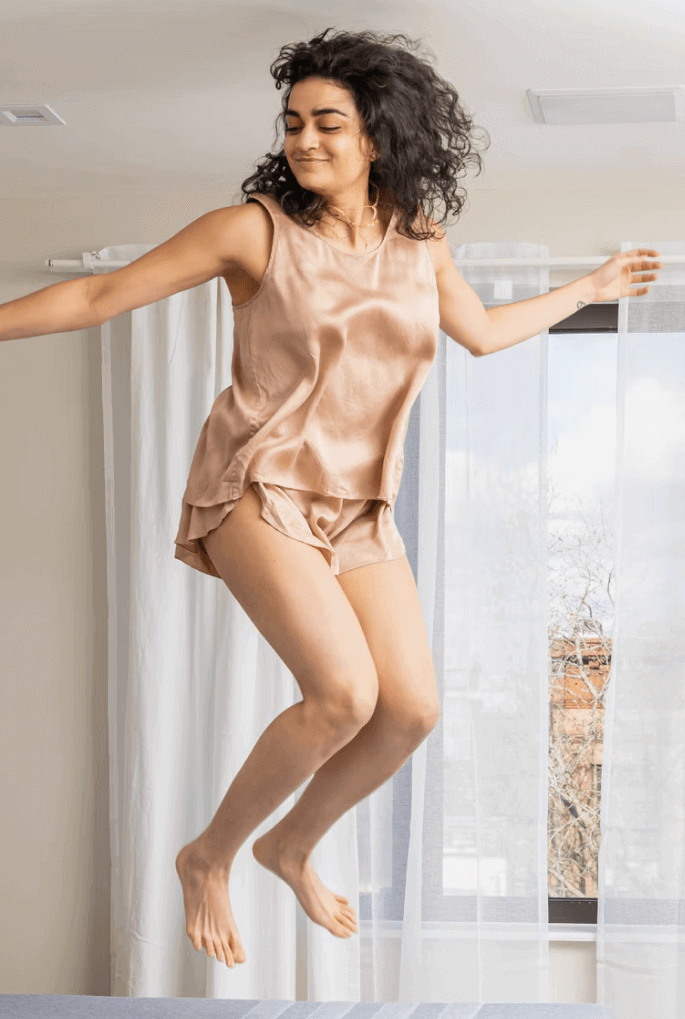Mattress Odors & Allergies
Mattress Odors and Off-Gassing
When GoodBed tests mattresses, we always give them a sniff test. All mattresses have some kind of initial ‘new mattress’ smell, especially those that come compressed and sealed in plastic. In most cases, that smell dissipates in a few days or a week. The term “off-gassing” is used for this type of smell, and you may notice it with other new furniture. Many people may find such initial smells off-putting or annoying, but don’t find them overpowering.
Most foams used in mattresses today are certified to the CertiPUR-US standard, which creates thresholds to ensure that foam is:
- Made without ozone depleting chemicals
- Made without PBDE, TDCPP or TCEP chemical flame retardants
- Manufactured without mercury, lead, and other heavy metals
- Made without formaldehyde
- Free of phthalates (as regulated by the CPSC)
- Low VOC emissions (less than 0.5 parts per million)
CertiPUR-US certification can reassure you that harmful off-gassing is certified to a minimum threshold. However, some are extremely sensitive to odors/perfumes and off-gassing, to the point where they can trigger sinus-related or allergic reactions.
If you are extremely sensitive to odors, you can minimize exposure by choosing mattresses with more materials that are less likely to off-gas the first place.
- Steel. The metal used for the coils in innerspring and hybrid mattresses won’t off-gas or smell.
- Latex. All-natural latex does have an initial smell (like latex hospital gloves), but it’s not a chemical smell from a petroleum product
- Wool. Natural wool is not a textile known to emit odors.
What to do if your new mattress smells
If the new-mattress smell bothers you too much to sleep on it, try putting it in another room for a few days, leaning against the wall to allow for maximum airflow. The odor should dissipate quickly.
Potential Allergens in Mattresses
If you have an allergy to a material commonly used in mattresses, you’ll need to check carefully. Fortunately, brands are generally forthcoming about disclosing mattress materials. This isn’t a definitive list, of course, but the most common concerns are latex, wool and polyester.
Latex
A small percentage of people are allergic to latex -- or rather, to the proteins in the sap of rubber trees from which natural latex is made. In the process of making natural latex foam, most of these proteins are washed away.
Most latex allergies are 'contact' allergies, meaning that physical exposure can trigger a reaction. Latex beds are enclosed in a cover, then are covered in sheets at home, so direct contact is unlikely.
We don't offer medical advice or counseling in any way, so it would certainly be smart for anyone with latex allergy concerns to check with a doctor before purchasing a latex mattress. In terms of how (or whether) a latex mattress will affect someone with a latex allergy, this will vary a lot depending on the severity of the allergy. Certainly, anyone that experiences breathing difficulty or whose latex allergy symptoms can be triggered simply by being in a room with latex should not be considering a latex mattress. That said, it should be noted that many people who suffer from either contact dermatitis or even latex allergies don't have any problems sleeping on a latex mattress.
Keep in mind that none of this applies to synthetic latex, which contains no rubber sap at all.
Wool
Wool allergies aren’t uncommon, and it’s a material that we sometimes see used in mattress covers and their quilting, and sometimes as a fire barrier, used as a natural moisture and heat regulating material. Manufacturers are usually proud that they use natural wool in products, so that information should be easy to find.
Polyester
This synthetic fiber is used extensively in mattress covers. Even brands that tout cotton in their covers are usually using a blend of cotton and polyester. And there can always be undisclosed fibers in a textile. If you are a person that tends to be sensitive to fabrics using a mattress protector and your favorite sheets may be enough.
Some manufacturers are using 100% cotton covers, and they will tout that in their specifications.
Previous
What is the Best Mattress for Sex?
Finding a mattress suitable for your other bedroom needs












































